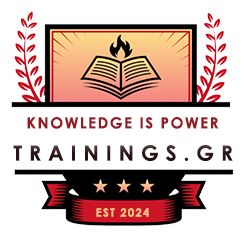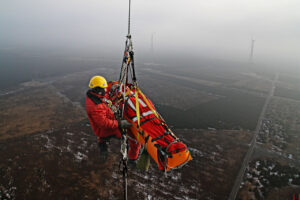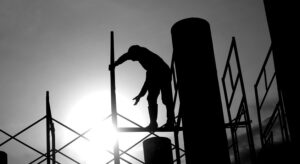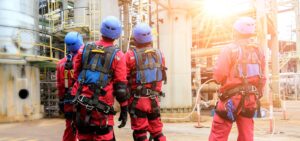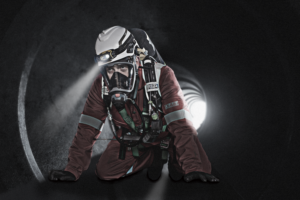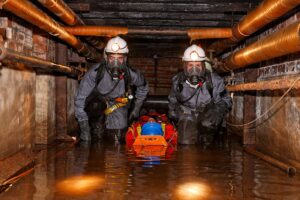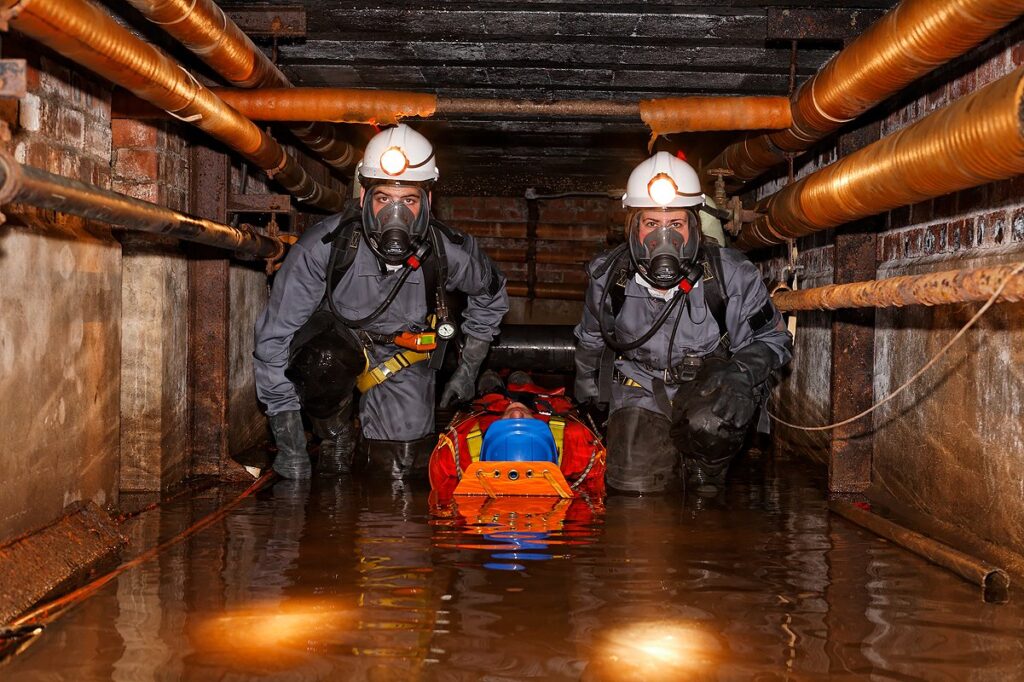
The rescue operation in a confined space environment has significant problems for rescuers. These specific areas usually present difficulties of access and movement for employees and also there may be risks such as lack of oxygen, explosive atmosphere, presence of dangerous gases, materials, risks of: flattening , falling , embedding, etc.
These risks also exist for the emergency team and / or for the rescue teams. Rescuers who will attempt to rescue must be properly prepared to deal with the existing hazards. Proper preparation, timely information and the existence of an up-to-date rescue plan are usually the main factors that determine a rescue operation.
The rescue operation has several steps. Like any rescue operation, the application of the methods in confined spaces leads the rescuers to face several difficulties which already they have to, ideally, be familiar with, from the moment of the planning. They should be able to face the difficulties by applying methods, techniques, tricks and skills to complete the rescue operation in a reasonable time.
The purpose of this article is to provide a brief overview of the most common problems that a rescue team can face in confined space rescue operation. The ways of managing and solving these problems are subject to specialized trainings.
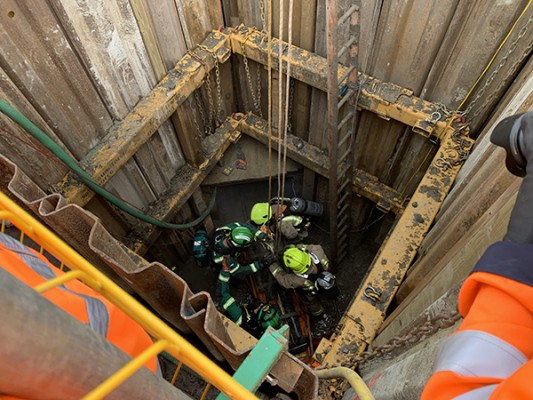
Confined Space Entry – Brief Description :
Confined spaces (CS) are spaces found in a work environment that are not designed for the permanent presence of employees into them. For example such places may include: tanks / silos / wells / pipes / wells / furnaces / heat exchangers / reactors / distillation towers etc.
A common feature in most CS is the difficulty of entering through horizontal / vertical manholes. They are often very narrow, which raises questions about the proper body type of the workers who will work inside.
In this article, we will not analyze the procedures for safe access and scheduling of works in CS or the ways of organizing and planning rescue operations from CS.

Team Rescue Operations (TRO) Main Problems-Brief Description :
The difficulties and problems during rescue operations from CS are: Friction problems / Change of directions (horizontal to vertical access) / Double CS (CS within another CS) or consecutive CS`s / Problems with safety lines / Very narrow spaces-entrances / Use of respiratory protection systems required / Necessity for the use of chemical protection suits.
The above problems are encountered either individually or in combination. The more they combine the more difficult a rescue operation becomes. Not all cases are covered here and not all the problems that a rescue team may encounter in CS are presented.
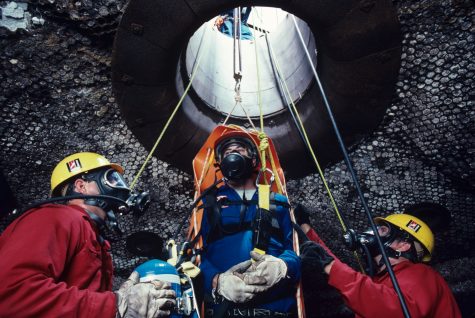
Short Description of TRO Main Problems in CS Rescue Operations :
In this paragraph we will describe the problems that exist in rescue operations so the reader can understand the difficulties which rescuers will face.
Change of Direction (H->V or V->H)
In some CS the direction of the movement may change internally. For example, in a CS “A” the entrance starts from a manhole and walk horizontally and then have a vertical ladder that goes down / up. The problem here is that in the beginning there may not be a need for Personal Fall Protection Measures, but for further safe movement they may be required or there may be a need to install a fall protection system or a need to hoist a casualty within the CS at this point and many more cases.
Respectively, there is the opposite case, in a CS “B” the access can be initially vertical and then horizontal. Many times, in this case, the employees, while initially using a fall protection system, as soon as they reach the horizontal part, they remove it.
The problems that also exist in both cases are these of the communication (the visual contact is lost) as well as problems with friction of the systems of fall protection, hoisting and rescue.
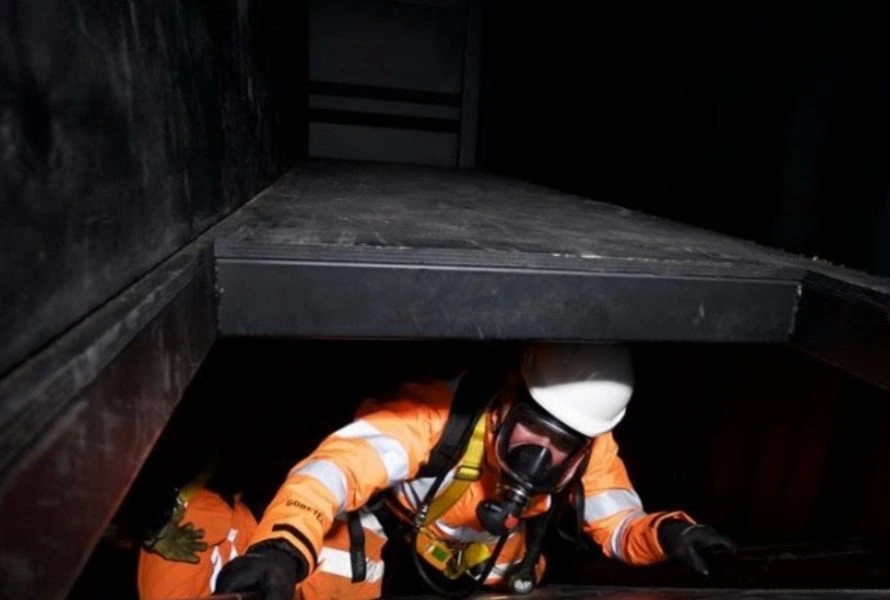
Friction management
If the interior of the CS has obstacles or if the movement using hoisting systems does not have a clear-straight line, then it is common to rub the rope (or cable) of the fall protection or hoisting(lifting) or rescue system in various parts of the structure.
As a result, friction creates additional resistance in the lifting / rescue systems and there is a risk that part of the system will fail due to wear and tear subjected to contact. The members of the rescue team should be capable of: 1)Avoiding friction or 2)solving/coping with friction problems.
Let us add here that the friction problems also exist when the employees enter the CS (access, when fall arrest systems are used, not full suspension of the employee) but , due to fact that the systems are not under tension, they are usually not taken seriously. In a rescue operation where the various systems are now under tension, however, these problems require immediate resolution.

Super narrow entrance/space
There are structures of CS that are very narrow. The manhole can be so narrow that it is quite difficult for an employee with a normal body type and weighing ~ 80 kg to enter. Having to enter using a harness will create additional problems (such as the harness straps being caught as it moves) or if he has to enter using a SCBA, this will not be possible with the device in the back.
The CS with this kind of entrance or with corresponding “passages” inside them create serious problems in a rescue operation for the rescue team. They should be familiar with movement, ways of advancing rescue equipment but also for rescue operations within such areas.

Twisted/tangled Safety Lines (T.S.L.)
The most common method of entering a vertical CS in the industry is for the worker to enter by using a ladder, wearing a harness and being secured by a fall arrest system that also has a winch so that it can be lifted immediately if required.
The problem arises when a second employee enters with a separate, corresponding, system. So from the entrance of the CS and downward there will be 2 safety lines (e.g. 2 wires, if standard systems are used). Employees due to stress and workload will not have their attention focused on how they should move so as not to twist their safety lines. It is very likely, depending on how long their safety lines are (how deep they have descended) and how often they will move at the base of the CS, that there is a twist between the 2 lines. When this happens it will not be possible to hoist/lift either of them.
If then an emergency occurs, employees due to the twist are very likely to be self-released from their safety lines and leave the CS without fall protection.
The rescue team should be aware of what they need to move in the event that they do not “get involved” with their safety systems or if they need to rescue someone who is in this situation , they must know ways to solve this problem (workers with tangled safety lines).
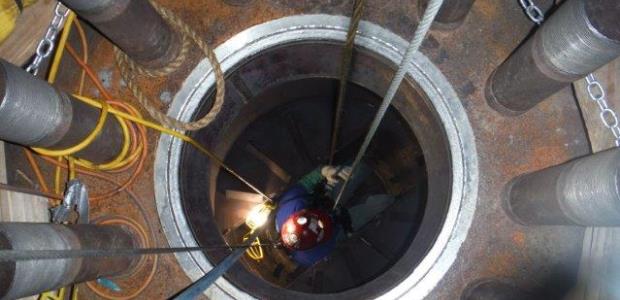
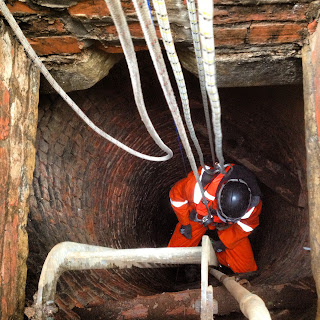
Double CS: CS inside an other CS or consecutive CS`s
There are constructions that are CS but within them there is a 2nd entrance for another area also CS. There can be many configurations. A critical point is whether the 2 entrances are on the same line or not. If not, great care is required in the planning of the work, the rescue methods and the rescue team should be able to deal with these difficulties.
When there is a work in such spaces, the planning should be different. It should not be understood as a single-access CS or the internal configuration not be taken into account. It is possible to enter from above a tank and at its base, at the end there is a shaft that can be horizontal or vertical. In these cases it is very likely that it will not be possible to work with a system that will be anchored outside the tank (there may be severe friction problems). Respectively, a rescue operation should be done in parts/stages.
It is most certain that rescue should not be planned at the time of the incident. The appropriate techniques and procedures, the necessary equipment, troubleshooting, staffing needs and positions of responsibility in the event of an emergency should be documented and resolved from the outset.

Increasing the difficulty…
Rescue operations can become even more complex and demanding in cases where the use of respiratory protective equipment or chemical protective suits or combination of these is required. These operations are of high risk. The use of a full face mask, for example, reduces the visual field of the rescuers, while the use of SCBA takes into account the available time. Similarly with an airline system in use, careful management of the pipes is required. Respectively, the use of a chemical protection suit makes it more difficult to move within the CS, the rescuers move more slowly and carefully while the transport of a stretcher is quite difficult. Think about that the problems described above will exist in these cases as well.
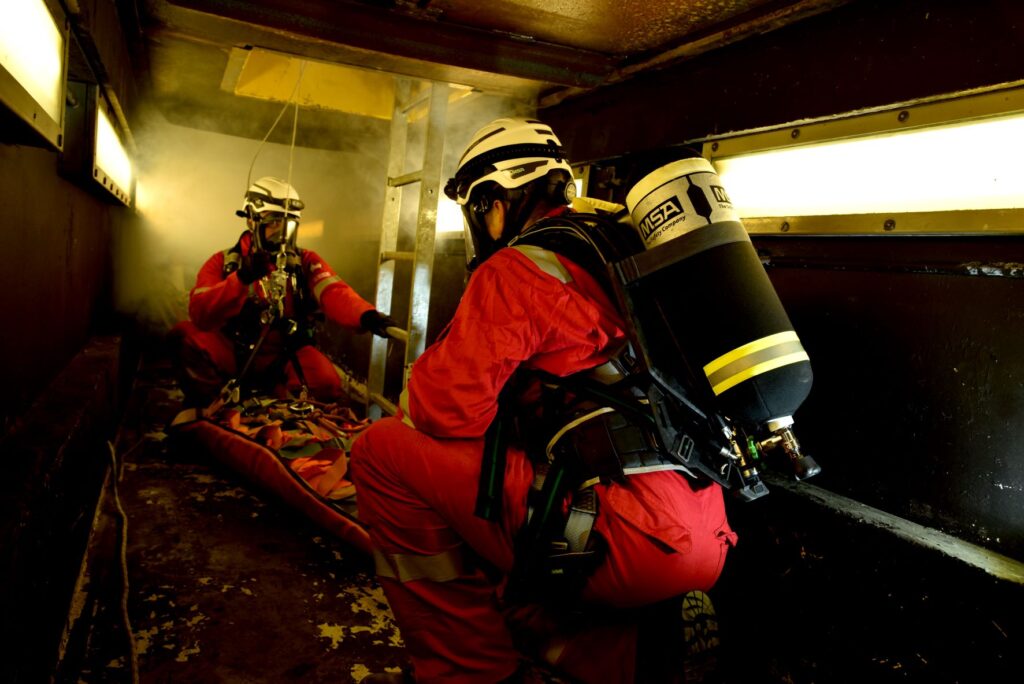
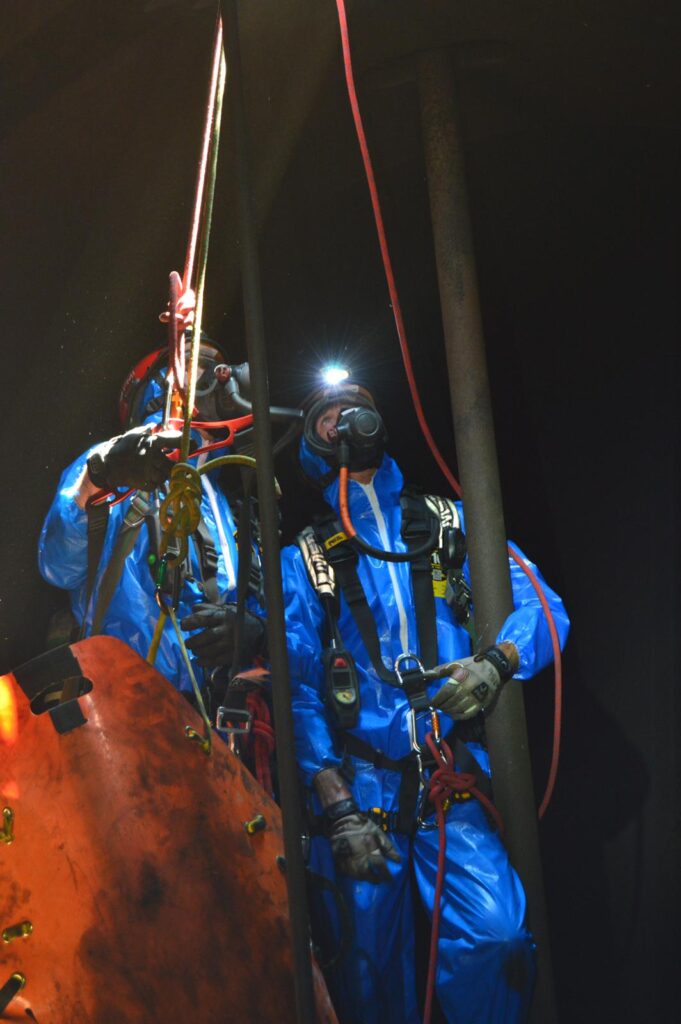
Categorizing rescue difficulty in confined spaces
We make a brief reference to a categorization that can be done about the rescue methods in CS:
(Ι):CS accident -> Self Rescue, casualty come out on his own
(ΙΙ):CS accident -> Direct / Indirect rescue from safety officer or rescuer (could be the tripod operator. Rescue either from outside or single rescuer goes inside)
(ΙΙΙ):CS accident -> Serious accident: Team rescue needed with/ without stretcher
(IV):CS accident -> Very serious/major accident: expert team rescue needed with use of respiratory protection or chemical suits or combination of them- with/without stretcher.
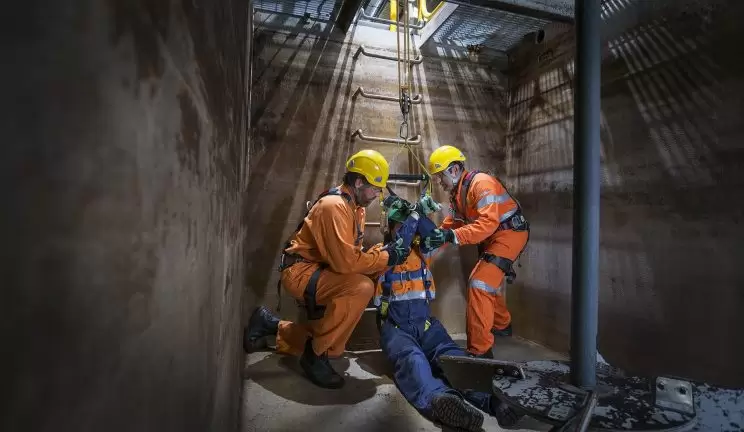
The above categorization is not a specific standard or an internationally accepted terminology. It is a proposal that we put up for discussion so that we can distinguish the levels of difficulty in rescue operations within confined spaces. The levels of different difficulty also define the needs of training, skills, equipment and number of people directly involved.
If it is required to place the patient on a stretcher to transport them outside the CS then we are at least in category III. If the space has enough internal obstacles or levels then we are also at least in category III. Τhe rescue planning and the assessment of the times and the difficulty of rescue is possible and useful to be made in order to take all appropriate measures and to be prepared for all that may be involved.
Authors: Kapetanakis Theofanis, Vythoulkas Nikolaos
https://doi.org/10.5281/zenodo.7150227
May 2022
- Photo 1: www.survivaltechnology.com
- Photo 2: www.oceantimemarine.com
- Photo 3: www.sitexsolutions.com
- Photo 4.1: www.flyability.com
- Photo 4.2: www.accessrescuecanada.org
- Photo 4.3: www.responsesafety.ca
- Photo 4.4α: www.ohsonline.com
- Photo 4.4β: www.ropetask.blogspot.com
- Photo 4.5: www.advancerescue.com
- Photo 5α: www.training.tecto.co.uk
- Photo 5β: www.elevatedsafety.com
- Photo 6: www.ergt.edu.au

